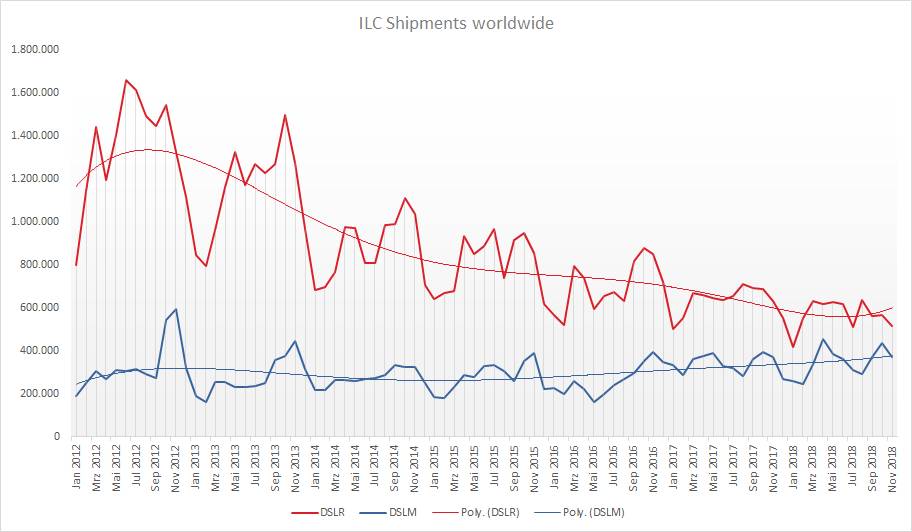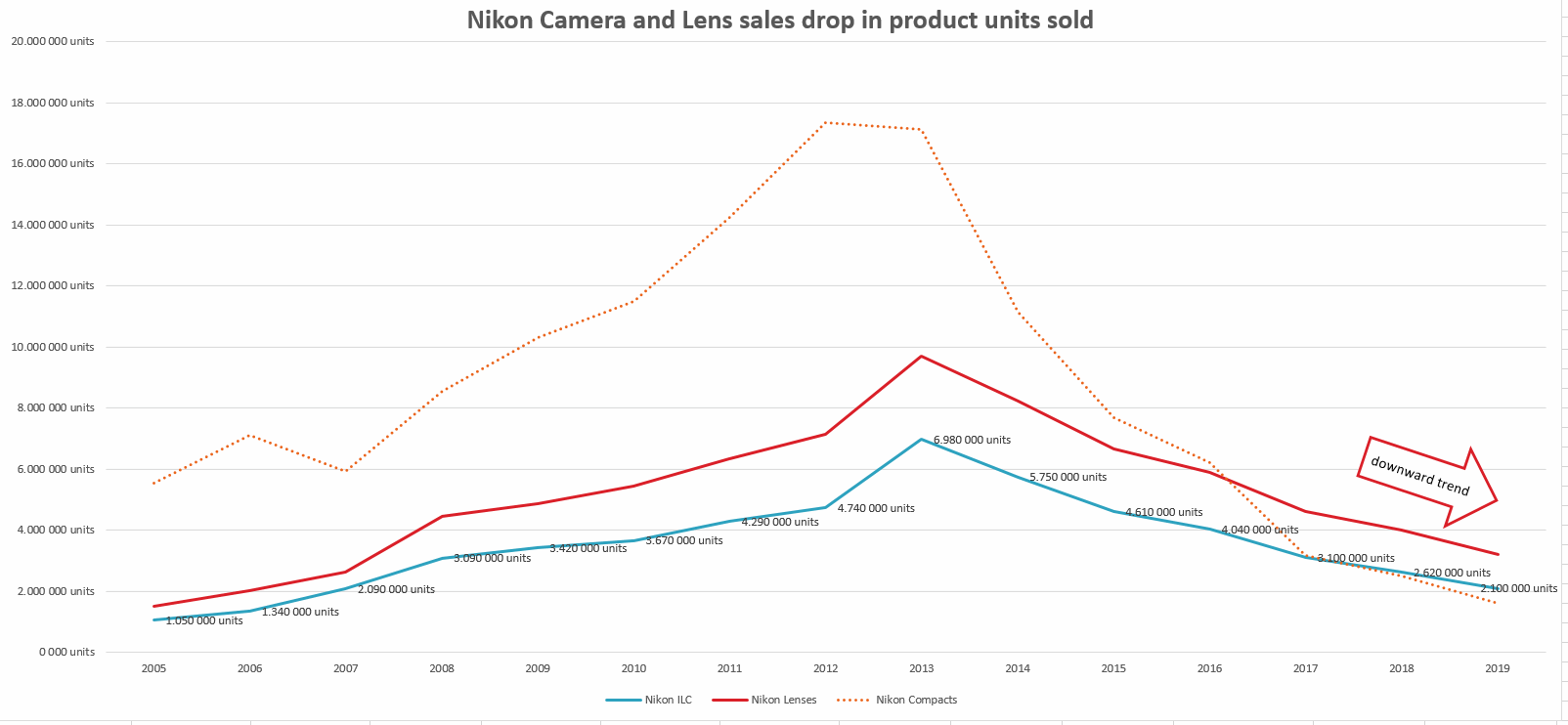 Originally posted by aaacb
Originally posted by aaacb 
I'd be curious, if such data is available, to see a chart of owners of ILC vs sales. The same way there's a huge pool of working film cameras, there's probably a pool of perfectly fine digital ILC that still work for their owners. I'm under the impression that my k3ii is considered ancient by now, and I won't mention the k10d that I bought used; yet I'm happy with both cameras and see no reason to upgrade.
Unlike automobiles, where only a tiny fraction of the total population of vehicles in working condition sits unused and unliscenced on a shelf or in a drawer, it's not possible to determine either the number of cameras sold in the past that would need to be replaced in order for their owners to take photographs with standalone cameras in the near future or the number of people who will decide to take photographs with a standalone camera in the near future.
The key driver in forecasting demand for standalone cameras is not price, but the number of people willing to invest their time in taking photographs with a standalone camera. Even someone with a big investment in camera equipment that sits on shelves, only buys brand new equipment if he or she intends to use it. There is also a threshold in time invested below which there is little incentive to buy brand new, because sufficient satisfaction is obtained by using what we already have. Those are the people who have little reason to upgrade and if what they already have becomes obsolete or quits working, they are unlikely to make a bigger time investment to bring them over the buy new threshold, they are more likely to quit investing time in taking photographs with standalone cameras altogether.
 Originally posted by normhead
Originally posted by normhead 
Markets will soon be what they were pre-digital.
That depends on how wide your view of the market is. Pre-digital, add-on cameras (added to your telephone, calculator or display device) didn't exist, so many people bought standalone cameras even if they hardly ever used them. On the other hand, the number of people in the world with enough disposable income to buy a standalone camera is a lot higher now than in the pre-digital age. If satisfying this market required a $300 camera body, someone would be manufacturing and selling such a thing. Maybe a global market of 10-11 million ILCs per year (2018 levels) is where it will stabilize or maybe the curious Canon executive is right and that market is only 5-6 million ILCs. Either way, that is enough of a market to justify a small number of companies continuing to manufacture ILCs, especially when they don't have to invest much in new technology.


 Similar Threads
Similar Threads 













 Post #34 by normhead
Post #34 by normhead








